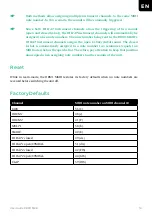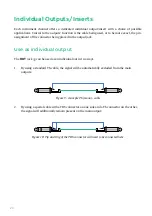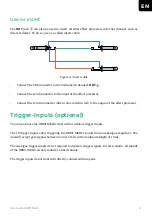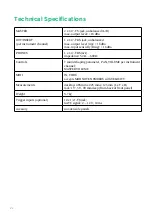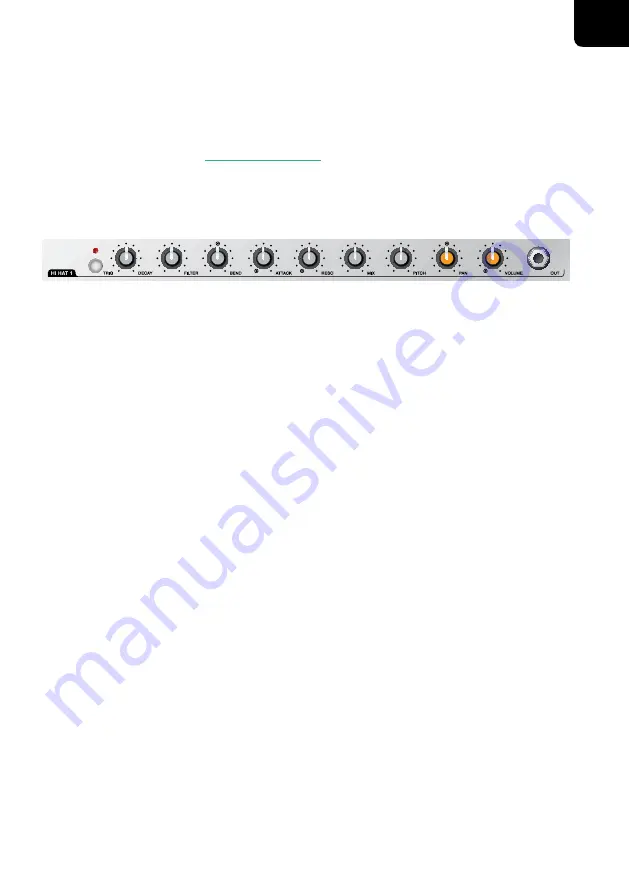
☛
Different kind of percussion sounds are possible, only by using the snare drum’s
filter section but leaving out the
NOISE
component. With
FILTER
and
RESO
being fully opened, the result will sound clave-like. By attenuating
RESO
, this
sound turns into a snare resembling a preset-beat-box from ‘78. Lowering
FILTER
and combine it with different
RESO
settings, leads to creditable 8-toms, congas
and bongos. (see "SNARE" on page 47)
HI HAT 1/HI HAT 2
Figure 7: HI HAT 1 instrument channel of the DRM1 MKIII - HI HAT 1 and HI HAT 2 are identical
These two instrument channels are meant to create hi-hats but also cymbal sounds. Achieve a
broad spectrum of cymbals, percussions and sound effects on a basis of filtered noise and a metallic
oscillator mixture.
DECAY
sets the release time or the sound’s length.
FILTER
sets the cutoff frequency of the low pass filter, coloring the overall sound of the
channel.
BEND
adjusts the amount of a possible cutoff modulation by the
DECAY
envelope. In its
central position, no modulation is present. Turn clockwise from the center position
to modulate the filter’s cutoff frequency, descending it. Turn counterclockwise
from the center position will invert the modulation, resulting in an ascending cutoff
frequency. This modulation interacts with the
DECAY
setting.
ATTACK
adds a short fixed needle impulse to the sound’s start to support the hi-hat and
cymbals’ assertiveness. Always adjust
ATTACK
in correlation to the complete mix.
The pitch of the impulse can be adjusted in parallel with the oscillator mixture
using
PITCH
.
RESO
specifies the intensity of the filter’s resonance which, as a result, shapes the sound
coloration of the hi-hat- and cymbal.
15
User Guide DRM1 MKIII
EN
Содержание DRM1 MKIII
Страница 1: ...Bedienungsanleitung User Guide DRM1 MKIII...



















